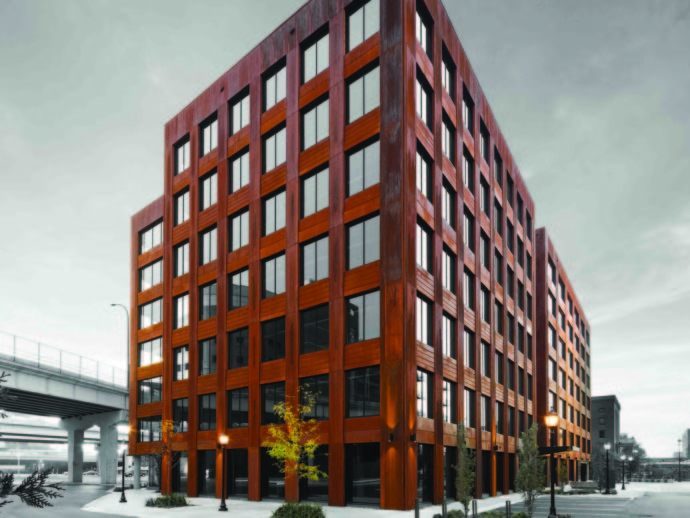A visionary architect is building wood high-rises that can help cool the planet
We reside inside them. We operate inside them. And our world’s getting warmer for these.
Are significant contributors to climate change–accounting for almost 40 percent.
That is largely due, but a part of buildings’ carbon donation is generated in the building stage. Producing (then constructing with) materials such as steel and concrete dumps 11 percent of global carbon dioxide emissions to the air.
However, architect Michael Green has a vision for producing buildings’ constructions not just carbon dioxide, but also carbon neutral. It entails swapping for what he believes to be the building material: wood, steel and concrete.
COMING OUT OF THE WOODWORK
Green explains that timber could be equally as robust and flexible as manmade building substances, yet the creation of the raw substance generates no emissions as it has “grown by the ability of sunlight.” Additionally, timber is a resource.
When wood structures were ravaged by fires such as Chicago, wood fell for a substance for buildings from the 19th century. However, as wood construction materials are becoming more firesafe, Green’s architectural business, Michael Green Architecture (MGA)–that was set in 2012 and obtained by tech-driven structure giant Katerra in 2018–has helped reestablish solid timber construction around the planet.
It had been among the game changers in timber structure that is. “We showed it can be built easily, it might be amazing, which we can use 100 percent timber,” Green says.
SAFETY FIRST
WIDC was constructed with cross-laminated wood (CLT), which is not enjoy the timber you find at the regional hardware shop. CLT is made up of layers of wood stacked in alternating directions and bonded to make panels that are rectangular that are strong. CLT is sturdy yet lightweight, and the panels burn off gradually, which may allow for fire resistance than steel.
In addition, in most of the buildings which MGA layouts, “The [inner wood] construction is guarded by additional substances which are non-combustible,” Green says. WIDC is clad in red cedar siding that is charred that is immune to flames.
SEEING THE FOREST FOR THE TREES
Assembling with CLT has advantages from a perspective. Rather than cutting old-growth trees, “We are utilizing smaller trees and gluing them together to create these huge panels,” states Green. Good care is taken by MGA from Forest Stewardship completely to supply its timber.
In MGA wood buildings along with WIDC –such as a Minneapolis office tower which became the contemporary timber construction in the US, T3 timber panels have been left exposed. This produces a feeling that is not just visually attractive, but also “promotes human wellbeing and joy,” states Green. “Workers in a office are more effective and have [fewer] sick days when they operate in a timber atmosphere ”
HAMMERING IT HOME
Given the advantages of timber buildings for flourishing, Green is spent in scaling wood construction jobs up by spearheading innovations. That is one reason MGA partnered with Katerra, that generates building elements that are large enabling buildings to be built rapidly and inexpensively.
Green’s expectation is making wood structure cheaper and quicker enables builders and architects to help facilitate what he calls the “huge human demand for home,” that is a catalyst of crises of homelessness and unaffordability in towns across the world.
The building of dozens of wood buildings lately “is a fantastic thing, but it is inadequate. It is essential to be prepared for what is next.”






